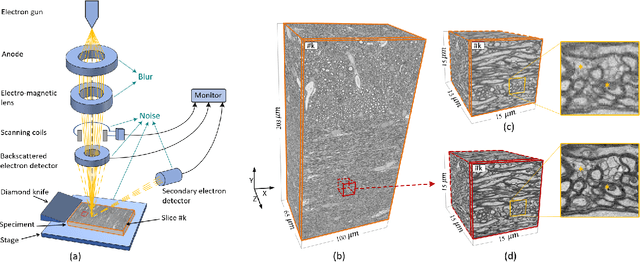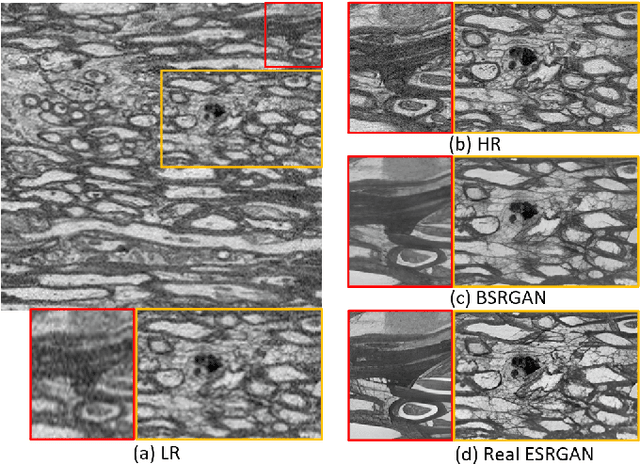Morteza Ghahremani
LatentMove: Towards Complex Human Movement Video Generation
May 28, 2025Abstract:Image-to-video (I2V) generation seeks to produce realistic motion sequences from a single reference image. Although recent methods exhibit strong temporal consistency, they often struggle when dealing with complex, non-repetitive human movements, leading to unnatural deformations. To tackle this issue, we present LatentMove, a DiT-based framework specifically tailored for highly dynamic human animation. Our architecture incorporates a conditional control branch and learnable face/body tokens to preserve consistency as well as fine-grained details across frames. We introduce Complex-Human-Videos (CHV), a dataset featuring diverse, challenging human motions designed to benchmark the robustness of I2V systems. We also introduce two metrics to assess the flow and silhouette consistency of generated videos with their ground truth. Experimental results indicate that LatentMove substantially improves human animation quality--particularly when handling rapid, intricate movements--thereby pushing the boundaries of I2V generation. The code, the CHV dataset, and the evaluation metrics will be available at https://github.com/ --.
MedBridge: Bridging Foundation Vision-Language Models to Medical Image Diagnosis
May 27, 2025Abstract:Recent vision-language foundation models deliver state-of-the-art results on natural image classification but falter on medical images due to pronounced domain shifts. At the same time, training a medical foundation model requires substantial resources, including extensive annotated data and high computational capacity. To bridge this gap with minimal overhead, we introduce MedBridge, a lightweight multimodal adaptation framework that re-purposes pretrained VLMs for accurate medical image diagnosis. MedBridge comprises three key components. First, a Focal Sampling module that extracts high-resolution local regions to capture subtle pathological features and compensate for the limited input resolution of general-purpose VLMs. Second, a Query Encoder (QEncoder) injects a small set of learnable queries that attend to the frozen feature maps of VLM, aligning them with medical semantics without retraining the entire backbone. Third, a Mixture of Experts mechanism, driven by learnable queries, harnesses the complementary strength of diverse VLMs to maximize diagnostic performance. We evaluate MedBridge on five medical imaging benchmarks across three key adaptation tasks, demonstrating its superior performance in both cross-domain and in-domain adaptation settings, even under varying levels of training data availability. Notably, MedBridge achieved over 6-15% improvement in AUC compared to state-of-the-art VLM adaptation methods in multi-label thoracic disease diagnosis, underscoring its effectiveness in leveraging foundation models for accurate and data-efficient medical diagnosis. Our code is available at https://github.com/ai-med/MedBridge.
DiaMond: Dementia Diagnosis with Multi-Modal Vision Transformers Using MRI and PET
Oct 30, 2024Abstract:Diagnosing dementia, particularly for Alzheimer's Disease (AD) and frontotemporal dementia (FTD), is complex due to overlapping symptoms. While magnetic resonance imaging (MRI) and positron emission tomography (PET) data are critical for the diagnosis, integrating these modalities in deep learning faces challenges, often resulting in suboptimal performance compared to using single modalities. Moreover, the potential of multi-modal approaches in differential diagnosis, which holds significant clinical importance, remains largely unexplored. We propose a novel framework, DiaMond, to address these issues with vision Transformers to effectively integrate MRI and PET. DiaMond is equipped with self-attention and a novel bi-attention mechanism that synergistically combine MRI and PET, alongside a multi-modal normalization to reduce redundant dependency, thereby boosting the performance. DiaMond significantly outperforms existing multi-modal methods across various datasets, achieving a balanced accuracy of 92.4% in AD diagnosis, 65.2% for AD-MCI-CN classification, and 76.5% in differential diagnosis of AD and FTD. We also validated the robustness of DiaMond in a comprehensive ablation study. The code is available at https://github.com/ai-med/DiaMond.
Mamba? Catch The Hype Or Rethink What Really Helps for Image Registration
Jul 27, 2024



Abstract:Our findings indicate that adopting "advanced" computational elements fails to significantly improve registration accuracy. Instead, well-established registration-specific designs offer fair improvements, enhancing results by a marginal 1.5\% over the baseline. Our findings emphasize the importance of rigorous, unbiased evaluation and contribution disentanglement of all low- and high-level registration components, rather than simply following the computer vision trends with "more advanced" computational blocks. We advocate for simpler yet effective solutions and novel evaluation metrics that go beyond conventional registration accuracy, warranting further research across diverse organs and modalities. The code is available at \url{https://github.com/BailiangJ/rethink-reg}.
Faster Image2Video Generation: A Closer Look at CLIP Image Embedding's Impact on Spatio-Temporal Cross-Attentions
Jul 27, 2024



Abstract:This paper investigates the role of CLIP image embeddings within the Stable Video Diffusion (SVD) framework, focusing on their impact on video generation quality and computational efficiency. Our findings indicate that CLIP embeddings, while crucial for aesthetic quality, do not significantly contribute towards the subject and background consistency of video outputs. Moreover, the computationally expensive cross-attention mechanism can be effectively replaced by a simpler linear layer. This layer is computed only once at the first diffusion inference step, and its output is then cached and reused throughout the inference process, thereby enhancing efficiency while maintaining high-quality outputs. Building on these insights, we introduce the VCUT, a training-free approach optimized for efficiency within the SVD architecture. VCUT eliminates temporal cross-attention and replaces spatial cross-attention with a one-time computed linear layer, significantly reducing computational load. The implementation of VCUT leads to a reduction of up to 322T Multiple-Accumulate Operations (MACs) per video and a decrease in model parameters by up to 50M, achieving a 20% reduction in latency compared to the baseline. Our approach demonstrates that conditioning during the Semantic Binding stage is sufficient, eliminating the need for continuous computation across all inference steps and setting a new standard for efficient video generation.
Stable-Pose: Leveraging Transformers for Pose-Guided Text-to-Image Generation
Jun 04, 2024



Abstract:Controllable text-to-image (T2I) diffusion models have shown impressive performance in generating high-quality visual content through the incorporation of various conditions. Current methods, however, exhibit limited performance when guided by skeleton human poses, especially in complex pose conditions such as side or rear perspectives of human figures. To address this issue, we present Stable-Pose, a novel adapter model that introduces a coarse-to-fine attention masking strategy into a vision Transformer (ViT) to gain accurate pose guidance for T2I models. Stable-Pose is designed to adeptly handle pose conditions within pre-trained Stable Diffusion, providing a refined and efficient way of aligning pose representation during image synthesis. We leverage the query-key self-attention mechanism of ViTs to explore the interconnections among different anatomical parts in human pose skeletons. Masked pose images are used to smoothly refine the attention maps based on target pose-related features in a hierarchical manner, transitioning from coarse to fine levels. Additionally, our loss function is formulated to allocate increased emphasis to the pose region, thereby augmenting the model's precision in capturing intricate pose details. We assessed the performance of Stable-Pose across five public datasets under a wide range of indoor and outdoor human pose scenarios. Stable-Pose achieved an AP score of 57.1 in the LAION-Human dataset, marking around 13% improvement over the established technique ControlNet. The project link and code is available at https://github.com/ai-med/StablePose.
Box It to Bind It: Unified Layout Control and Attribute Binding in T2I Diffusion Models
Feb 27, 2024



Abstract:While latent diffusion models (LDMs) excel at creating imaginative images, they often lack precision in semantic fidelity and spatial control over where objects are generated. To address these deficiencies, we introduce the Box-it-to-Bind-it (B2B) module - a novel, training-free approach for improving spatial control and semantic accuracy in text-to-image (T2I) diffusion models. B2B targets three key challenges in T2I: catastrophic neglect, attribute binding, and layout guidance. The process encompasses two main steps: i) Object generation, which adjusts the latent encoding to guarantee object generation and directs it within specified bounding boxes, and ii) attribute binding, guaranteeing that generated objects adhere to their specified attributes in the prompt. B2B is designed as a compatible plug-and-play module for existing T2I models, markedly enhancing model performance in addressing the key challenges. We evaluate our technique using the established CompBench and TIFA score benchmarks, demonstrating significant performance improvements compared to existing methods. The source code will be made publicly available at https://github.com/nextaistudio/BoxIt2BindIt.
No-Clean-Reference Image Super-Resolution: Application to Electron Microscopy
Jan 26, 2024



Abstract:The inability to acquire clean high-resolution (HR) electron microscopy (EM) images over a large brain tissue volume hampers many neuroscience studies. To address this challenge, we propose a deep-learning-based image super-resolution (SR) approach to computationally reconstruct clean HR 3D-EM with a large field of view (FoV) from noisy low-resolution (LR) acquisition. Our contributions are I) Investigating training with no-clean references for $\ell_2$ and $\ell_1$ loss functions; II) Introducing a novel network architecture, named EMSR, for enhancing the resolution of LR EM images while reducing inherent noise; and, III) Comparing different training strategies including using acquired LR and HR image pairs, i.e., real pairs with no-clean references contaminated with real corruptions, the pairs of synthetic LR and acquired HR, as well as acquired LR and denoised HR pairs. Experiments with nine brain datasets showed that training with real pairs can produce high-quality super-resolved results, demonstrating the feasibility of training with non-clean references for both loss functions. Additionally, comparable results were observed, both visually and numerically, when employing denoised and noisy references for training. Moreover, utilizing the network trained with synthetically generated LR images from HR counterparts proved effective in yielding satisfactory SR results, even in certain cases, outperforming training with real pairs. The proposed SR network was compared quantitatively and qualitatively with several established SR techniques, showcasing either the superiority or competitiveness of the proposed method in mitigating noise while recovering fine details.
RegBN: Batch Normalization of Multimodal Data with Regularization
Oct 01, 2023Abstract:Recent years have witnessed a surge of interest in integrating high-dimensional data captured by multisource sensors, driven by the impressive success of neural networks in the integration of multimodal data. However, the integration of heterogeneous multimodal data poses a significant challenge, as confounding effects and dependencies among such heterogeneous data sources introduce unwanted variability and bias, leading to suboptimal performance of multimodal models. Therefore, it becomes crucial to normalize the low- or high-level features extracted from data modalities before their fusion takes place. This paper introduces a novel approach for the normalization of multimodal data, called RegBN, that incorporates regularization. RegBN uses the Frobenius norm as a regularizer term to address the side effects of confounders and underlying dependencies among different data sources. The proposed method generalizes well across multiple modalities and eliminates the need for learnable parameters, simplifying training and inference. We validate the effectiveness of RegBN on eight databases from five research areas, encompassing diverse modalities such as language, audio, image, video, depth, tabular, and 3D MRI. The proposed method demonstrates broad applicability across different architectures such as multilayer perceptrons, convolutional neural networks, and vision transformers, enabling effective normalization of both low- and high-level features in multimodal neural networks. RegBN is available at \url{https://github.com/mogvision/regbn}.
Self-Supervised Super-Resolution Approach for Isotropic Reconstruction of 3D Electron Microscopy Images from Anisotropic Acquisition
Sep 19, 2023Abstract:Three-dimensional electron microscopy (3DEM) is an essential technique to investigate volumetric tissue ultra-structure. Due to technical limitations and high imaging costs, samples are often imaged anisotropically, where resolution in the axial direction ($z$) is lower than in the lateral directions $(x,y)$. This anisotropy 3DEM can hamper subsequent analysis and visualization tasks. To overcome this limitation, we propose a novel deep-learning (DL)-based self-supervised super-resolution approach that computationally reconstructs isotropic 3DEM from the anisotropic acquisition. The proposed DL-based framework is built upon the U-shape architecture incorporating vision-transformer (ViT) blocks, enabling high-capability learning of local and global multi-scale image dependencies. To train the tailored network, we employ a self-supervised approach. Specifically, we generate pairs of anisotropic and isotropic training datasets from the given anisotropic 3DEM data. By feeding the given anisotropic 3DEM dataset in the trained network through our proposed framework, the isotropic 3DEM is obtained. Importantly, this isotropic reconstruction approach relies solely on the given anisotropic 3DEM dataset and does not require pairs of co-registered anisotropic and isotropic 3DEM training datasets. To evaluate the effectiveness of the proposed method, we conducted experiments using three 3DEM datasets acquired from brain. The experimental results demonstrated that our proposed framework could successfully reconstruct isotropic 3DEM from the anisotropic acquisition.
 Add to Chrome
Add to Chrome Add to Firefox
Add to Firefox Add to Edge
Add to Edge